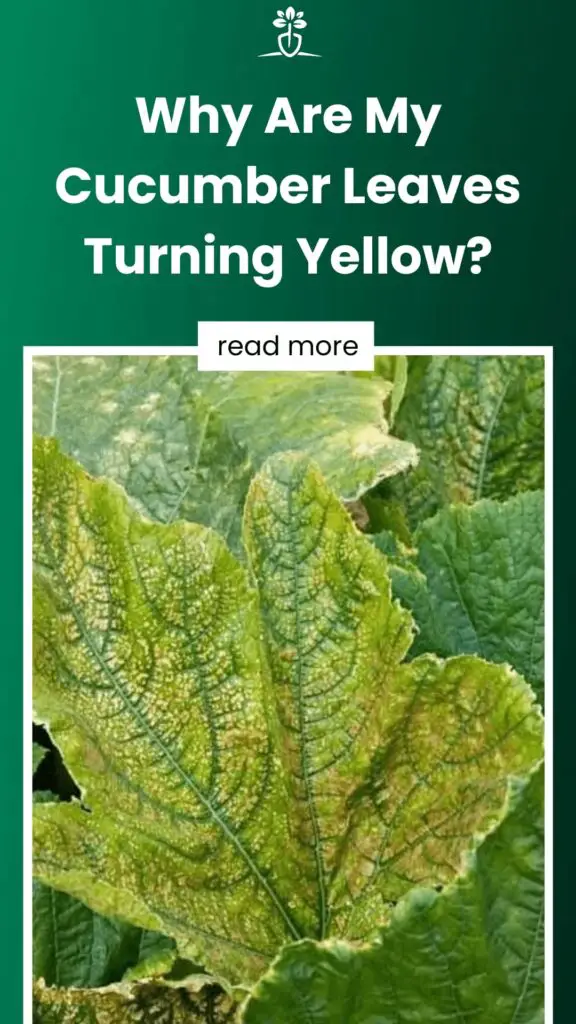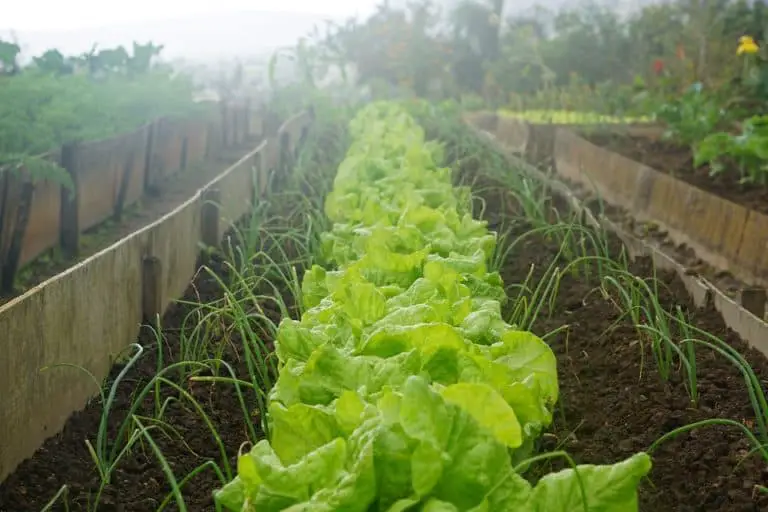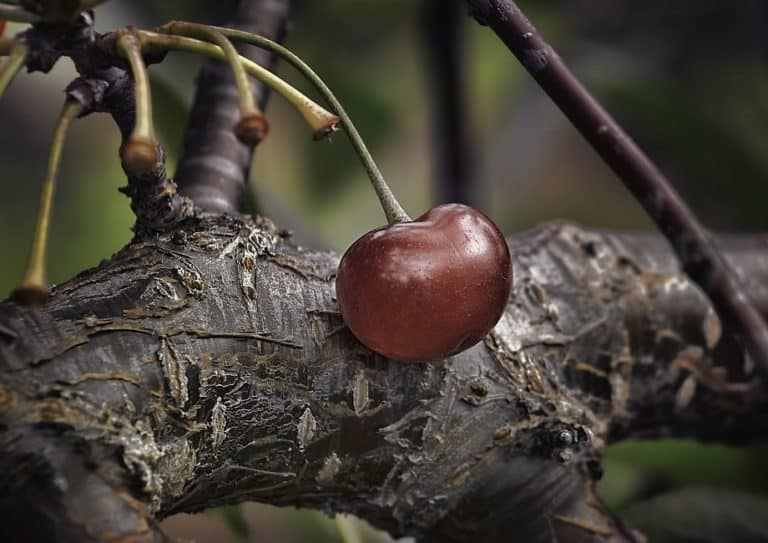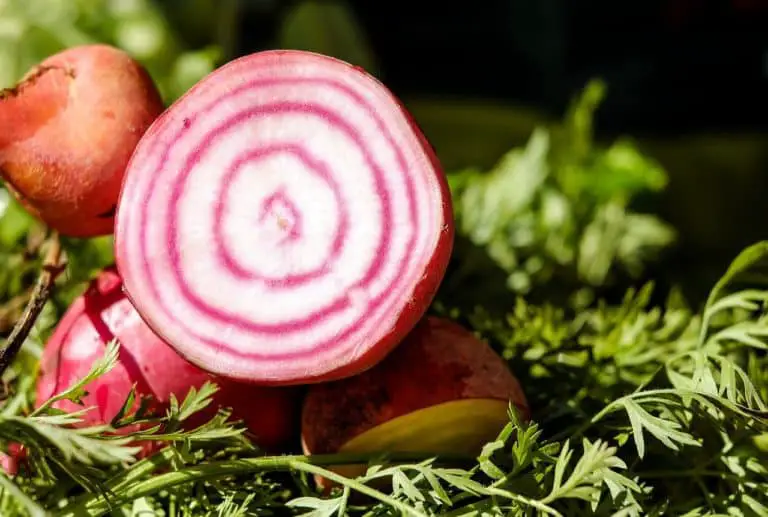Why Are My Cucumber Leaves Turning Yellow?

Yellow cucumber leaves could show up for many reasons. **Nutritional deficiencies**, strange watering habits, **not enough sunlight**, and pesky bugs or diseases might cause it.
Cucumbers require consistent watering, warm and sunny conditions and fertile soils because they are heavy feeders. Therefore, how well they grow depends on the quality and amount of nutrients they get. The plants are also subject to a variety of issues that causes the leaves to turn yellow (a condition known as chlorosis) even die if the conditions are severe or not addressed in time.
Contents
Common Causes of Cucumber Plant Leaves Turning Yellow
The yellowing of cucumber leaves or chlorosis is usually due to nutritional deficiencies, water problems, light problems, plant pests, and plant diseases. Let’s take a closer look at these five causes:
Nutritional Deficiency
As mentioned above, cucumbers are considered heavy feeders, which means that they need a lot of nutrients to grow and produce properly. If any of the key nutrients are lacking, the cucumber plant leaves will turn yellow.
In this case, you need to have the soil in your garden tested if you want to accurately determine whether your plant lacks any of the major nutrients. Some of the common nutritional deficiencies that can lead to cucumber leaves turning yellow include:
Nitrogen Deficiency
Nitrogen is a major nutrient when it comes to the growth of any plant. Nitrogen deficiencies do cause not only the yellowing of leaves in cucumber plants but also stunted growth. In severe cases, the condition may cause the plant to die eventually.
Consequently, it would be best if you looked out for nitrogen deficiency signs while in your garden since the problem is easy to fix when spotted in time. Look out for older leaves in cucumber plants turning yellow at the tips or along the central veins while the newer leaves remain green.
You can easily fix nitrogen deficiencies by applying a 2-inch layer of compost manure or 1-2 tablespoons of nitrogenous fertilizer such as ammonium nitrate. However, avoid using too much fertilizer in your garden’s soil as it might affect the cucumber plants’ production.
Potassium Deficiency
Cucumbers are among a few crops that need more potassium than nitrogen. Some of the common signs of potassium deficiency are leaves turning yellow at the edges and tips, while the fruits tend to have a club-shaped appearance. Moreover, the newer leaves tend to be small and dull and are puckered or cupped.
Luckily, you can solve this problem by adding a well-balanced fertilizer. You can also treat your soil for alkalinity or acidity if necessary.
Iron Deficiency
Iron deficiency is also another cause of cucumber leaves turning yellow. If you find young leaves turning yellow while their veins and older leaves remain green, iron deficiency could be the cause. You can treat the deficiency by spraying liquid iron on the cucumber plant or adding powdered or granular chelated iron at the plant’s root zone.
Zinc Deficiency
If you see the older leaves start turning yellow between the veins, the cause is likely Zinc deficiency. In this case, the plant’s growth is usually stunted, and the leaf size is smaller than average. To treat the deficiency, you need to spray the cucumber plant with a Zinc Sulfate solution or use organic kelp.
Plant Pests
There are a wide variety of plant pests, including insects that suck the sap from the leaves. The sucking of sap is one of the most common causes of leaf discoloration and yellowing. Common plant pests include:
Spider mites
These suck cucumber leaves and are usually found on the undersides of the leaves. Spider mites cause yellow stippling.
Aphids
Aphids are small oval-shaped insects that also attach to the underside of cucumber leaves. These pests are mainly yellow or green and leave a sticky black substance on the leaves known as honeydew.
Whiteflies
Whiteflies hang out on the leaves as a tiny cloud of white-winged insects and leave a honeydew behind, just like aphids.
To get rid of these pests you may want to consider using an insecticide that is safe and environmentally friendly.
Plant Diseases
In some cases, plant diseases may also cause your cucumber leaves to yellow streaks or spots. The following are diseases that cause yellowing of leaves:
Fusarium Wilt
This disease is caused by cucumber beetle larvae that feed on the plant roots, causing the leaves to turn yellow from the edges and spread inwards. To control the disease in your garden, you should get rid of the infected plants.
The other common disease that causes cucumber leaves to turn yellow is the Verticillium wilt. This disease is common if you plant cucumbers in a garden with tomatoes, eggplants, potatoes, and peppers.
Cucumber Mosaic Virus
The cucumber mosaic virus causes the plant’s leaves to develop wrinkles and curve downward with yellow spots. Just like Fusarium wilt, you only need to get rid of the infected plants in your vegetable garden to control the disease as it can easily be spread by plant pests such as leafhoppers or aphids.
Downy Mildew
This is another common plant disease that can also cause your cucumber leaves are turning yellow. Common signs are yellow spots on the upper side of the leaves that later turn brown. To manage and prevent this disease, you need to plant cucumber varieties with high resistance, get rid of the infected plants, and improve air circulation around the plants.
Lack of Adequate Sunlight
If your cucumber fails to get enough sunlight, some of the leaves will likely turn yellow and limp. Therefore, you should set your garden in a place with adequate sunlight or move them to an area with sunlight for at least 6 hours per day if they are in movable containers.
Water is one of the essential requirements in the growth of any plant. However, overwatering some plants like cucumber can lead to the yellowing of the leaves. Overwatering causes the roots to be deprived of oxygen, which leads to the yellowing of the leaves and eventually wilting. Remember, cucumber plants require only 1 to 2 inches of water per week.
To prevent the problem, plant your cucumber plant on containers with drainage holes or raised beds. You can also consider loosening your soil by adding sand if there is a problem with soil drainage. Moreover, contact people from the department of agriculture as there are systemic fungicides that effectively manage and control downy mildew.
Conclusion/Final Thoughts
Cucumbers are relatively easy to grow compared to many plants. However, they are also prone to problems and conditions that cause their leaves to turn yellow or eventually dry if the problem is severe.
We have discussed some of the common reasons why your cucumber leaves are turning yellow and also given practical solutions to help you identify, manage and prevent this problem.




